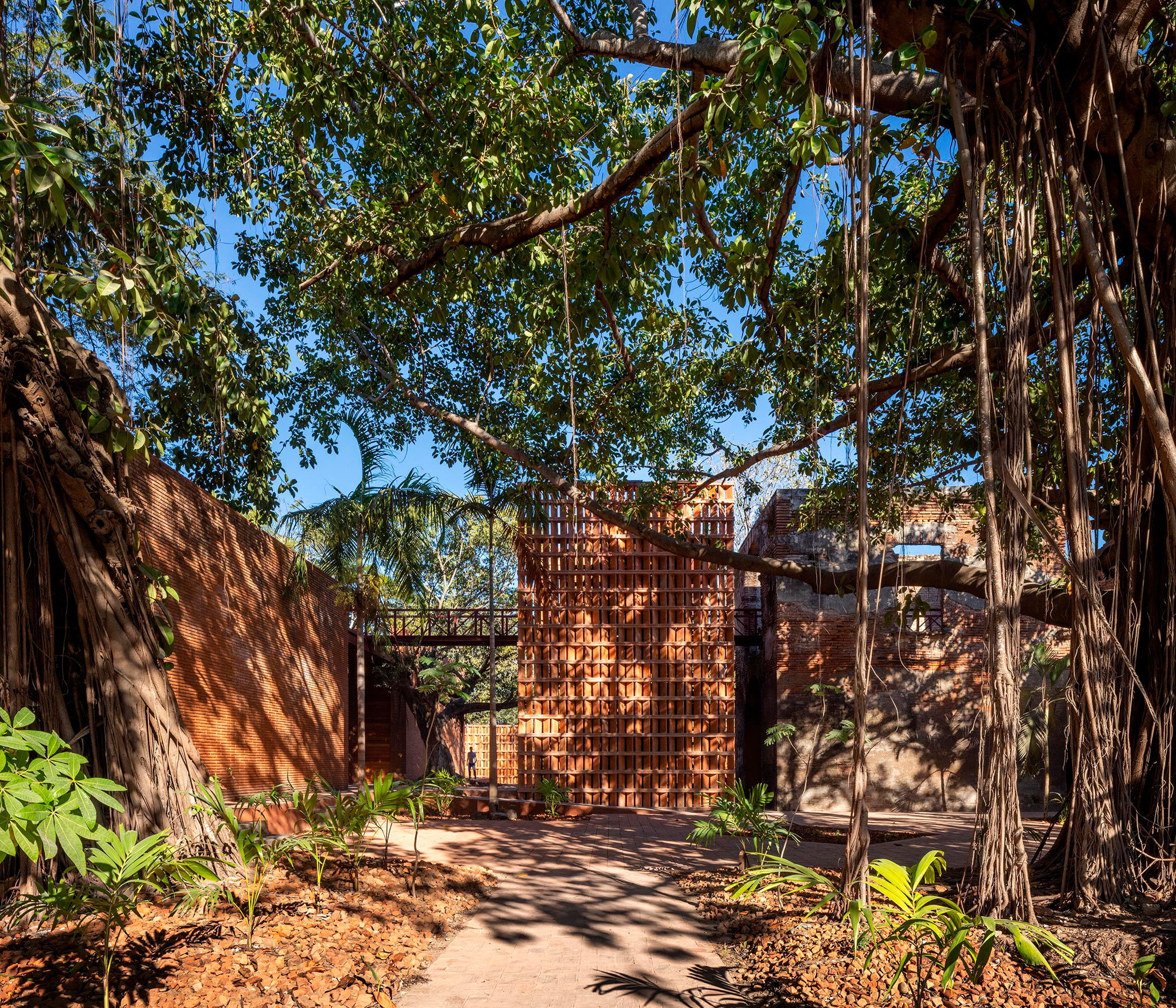
Using four clay planes, Colectivo C733 creates a composition that seeks to generate a new relationship between the existing building and its surroundings through the representation of the universe and its connection with humans and nature.
By creating a contemporary structure with locally manufactured brick elements, the project defines the different spaces, separating public spaces, such as plazas and workshop areas, from private ones.

Aduana de San Blas Cultural Center by Colectivo C733. Photograph by Rafael Gamo.
Project description by Colectivo C733
In 1768, the Port of San Blas was established in Nueva Galicia, Mexico, with the purpose of protecting the Pacific coasts and becoming a gateway for Asian merchandise. Until a few years ago, the old San Blas customs building still retained its first level and an old bay used as an exhibition space. In addition, there are a series of small workshops and vestiges of the original structure, made of artisanal brick.
The main objective of the current intervention in the historic building was its recovery and the construction of workshops for the cultural development of the community, accompanied by a museum and exhibition area. The intervention began by consolidating the vestiges of brick to preserve the memory of time. Then, a contemporary structure was created with locally manufactured brick elements, which defined public spaces such as plazas and areas for workshops.

The heart of the courtyards is inhabited by an industrial-style bridge, a viewing piece and vertical ambulatory that allows the visitor to reach the roof of the historic building and the roof of the workshops. In addition, there is an open-air forum in the form of a Sikuli, a Huichol structure that represents the composition of the universe and the connection between human beings, nature and the universe. The composition of four clay planes allowed a new relationship between the existing building and the new structures, between the past and the present, and between nature and the built structures. The building seeks to unfold the activities to a second level with other opportunities for wind, views and light, turning the same rooftops into stage spaces for cultural activities. The vertical ambulatory becomes a transit through time in the memory of one of the oldest buildings in this port.


















































